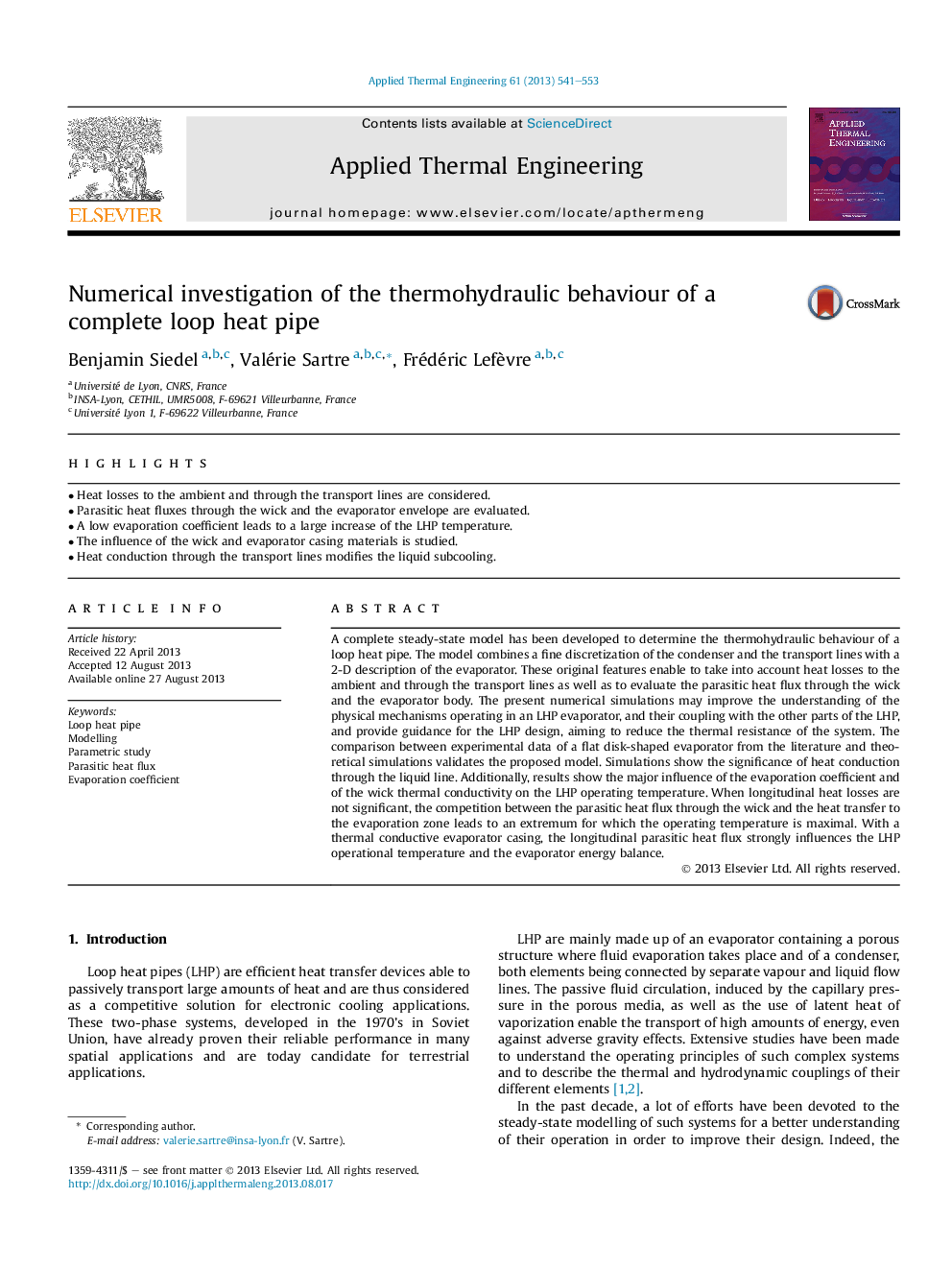| Article ID | Journal | Published Year | Pages | File Type |
|---|---|---|---|---|
| 646612 | Applied Thermal Engineering | 2013 | 13 Pages |
•Heat losses to the ambient and through the transport lines are considered.•Parasitic heat fluxes through the wick and the evaporator envelope are evaluated.•A low evaporation coefficient leads to a large increase of the LHP temperature.•The influence of the wick and evaporator casing materials is studied.•Heat conduction through the transport lines modifies the liquid subcooling.
A complete steady-state model has been developed to determine the thermohydraulic behaviour of a loop heat pipe. The model combines a fine discretization of the condenser and the transport lines with a 2-D description of the evaporator. These original features enable to take into account heat losses to the ambient and through the transport lines as well as to evaluate the parasitic heat flux through the wick and the evaporator body. The present numerical simulations may improve the understanding of the physical mechanisms operating in an LHP evaporator, and their coupling with the other parts of the LHP, and provide guidance for the LHP design, aiming to reduce the thermal resistance of the system. The comparison between experimental data of a flat disk-shaped evaporator from the literature and theoretical simulations validates the proposed model. Simulations show the significance of heat conduction through the liquid line. Additionally, results show the major influence of the evaporation coefficient and of the wick thermal conductivity on the LHP operating temperature. When longitudinal heat losses are not significant, the competition between the parasitic heat flux through the wick and the heat transfer to the evaporation zone leads to an extremum for which the operating temperature is maximal. With a thermal conductive evaporator casing, the longitudinal parasitic heat flux strongly influences the LHP operational temperature and the evaporator energy balance.
